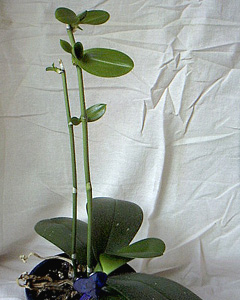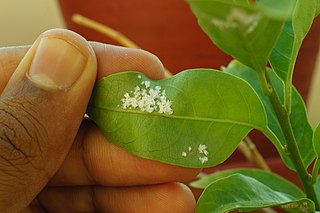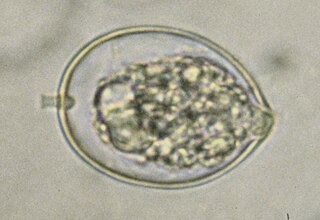
Orchids are plants that belong to the family Orchidaceae, a diverse and widespread group of flowering plants with blooms that are often colourful and fragrant.

The parsnip is a root vegetable closely related to carrot and parsley, all belonging to the flowering plant family Apiaceae. It is a biennial plant usually grown as an annual. Its long taproot has cream-colored skin and flesh, and, left in the ground to mature, becomes sweeter in flavor after winter frosts. In its first growing season, the plant has a rosette of pinnate, mid-green leaves. If unharvested, it produces a flowering stem topped by an umbel of small yellow flowers in its second growing season, later producing pale brown, flat, winged seeds. By this time, the stem has become woody, and the tap root inedible. Precautions should be taken when handling the stems and foliage, as parsnip sap can cause a skin rash or even blindness if exposed to sunlight after handling.

Texas root rot is a disease that is fairly common in Mexico and the southwestern United States resulting in sudden wilt and death of affected plants, usually during the warmer months. It is caused by a soil-borne fungus named Phymatotrichopsis omnivora that attacks the roots of susceptible plants. It was first discovered in 1888 by Pammel and later named by Duggar in 1916.

The mung bean, alternatively known as the green gram, maash ٫ mūng, monggo, đậu xanh, kacang hijau or munggo (Philippines), is a plant species in the legume family. The mung bean is mainly cultivated in East, Southeast and South Asia. It is used as an ingredient in both savoury and sweet dishes.

Phalaenopsis, also known as moth orchids, is a genus of about seventy species of plants in the family Orchidaceae. Orchids in this genus are monopodial epiphytes or lithophytes with long, coarse roots, short, leafy stems and long-lasting, flat flowers arranged in a flowering stem that often branches near the end. Orchids in this genus are native to India, Taiwan, China, Southeast Asia, New Guinea and Australia with the majority in Indonesia and the Philippines.

In horticulture, a keiki is a plant produced asexually by an orchid plant, especially Dendrobium, Epidendrum, and Phalaenopsis orchids. The baby plant is an exact clone of the mother plant, sometimes flowering while still attached to the mother. The word keiki is Hawaiian for "baby" or "child", literally "the little one".

Cleistocactus strausii, the silver torch or wooly torch, is a perennial flowering plant in the family Cactaceae. It is native to mountainous regions of Department Tarija, Bolivia, at 1,500–3,000 m (4,921–9,843 ft).

Woolly aphids are sap-sucking insects that produce a filamentous waxy white covering which resembles cotton or wool. The adults are winged and move to new locations where they lay egg masses. The nymphs often form large cottony masses on twigs, for protection from predators.

Sooty mold is a collective term for different Ascomycete fungi, which includes many genera, commonly Cladosporium and Alternaria. It grows on plants and their fruit, but also environmental objects, like fences, garden furniture, stones, and even cars. The mold benefits from either a sugary exudate produced by the plant or fruit, or honeydew-secreting insects or sap suckers the plant may be infested by.

The ornamental orchid species Phalaenopsis hieroglyphica is native to certain islands of the Philippines. Its flowers are creamy white with transverse markings that resemble glyphs. Through hybridization, growers have successfully created flowers with different shapes and colors while retaining the glyphs. Since 1975, the species has been protected under Appendix II of the Convention on International Trade in Endangered Species of Wild Fauna and Flora (CITES).

Phytophthora cactorum is a fungal-like plant pathogen belonging to the Oomycota phylum. It is the causal agent of root rot on rhododendron and many other species, as well as leather rot of strawberries.

Verticillium dahliae is a fungal plant pathogen. It causes verticillium wilt in many plant species, causing leaves to curl and discolor. It may cause death in some plants. Over 400 plant species are affected by Verticillium complex.

Psylla pyri, commonly known as the pear psylla or pear psyllid, is an insect in the family Psyllidae. Originating in Europe and Asia, it has spread to North America. It is a pest of pear trees, sucking the sap, damaging the foliage, flowers and fruit and diminishing the crop.
This glossary of viticultural terms list some of terms and definitions involved in growing grapes for use in winemaking.

Phalaenopsis gigantea is a species of orchid endemic to the island of Borneo and was first described in 1909. The specific epithet gigantea refers to the giant size of its leaves, which can grown over 60 cm in length on a mature plant. It is the largest known Phalaenopsis species.

Celosia argentea var. cristata, known as cockscomb, is the cristate or crested variety of the species Celosia argentea. It was likely originally native to India, where it was saved from extinction in cultivation by the religious significance attached to the variety by Indian, Burmese, and Chinese gardeners who planted it near temples. The name cockscomb is used because the flower looks like the head on a rooster (cock). The plants are resistant to most diseases, and grow equally well indoors or out, though the perfect place is one with no shade and a well-drained soil, as the plant is susceptible to fungal diseases.

The Celebrity tomato cultivar is a hybrid (biology) that produces long fruit-bearing stems holding 20 or more very plump, robust tomatoes. Fruits weigh approximately 8 oz., and are 4 inches across. Plants need caging or staking, and produce fruit throughout the growing season. The celebrity tomato is a cultivar of the species Solanum lycopersicum. It is a crossbreed of the common tomato that is widely used for various culinary purposes. This tomato is of great size and is known to be resistant to most tomato diseases such as Fusarium wilt, Verticillium wilt, Tobacco mosaic virus and Root-knot nematode due to its hybrid nature. Celebrity tomatoes are highly adaptive to harsh environments and can grow in a wide range of places including dry, humid and wet regions. They are resistant to cracking and splitting which usually occurs when there is an excess of water and sugar movement in the fruits. Therefore, causing the tomato skin to grow at a slower rate compared to the expansion of the fruit. They can survive in harsh uneven rainfall. However, they are highly susceptible to colder environments and are at a higher risk of dying in regions with short growing seasons. The plants can grow up to 5 feet in height with bright red medium-sized fruits. The plants are generally very thick and grow in clusters. The tomato fruits are mostly used in the making of various salsas, salads, juices and canned food.

Rhopalosiphum rufiabdominale, the rice root aphid or red rice root aphid, is a sap-sucking insect pest with a wide host range and a global distribution. As a member of the superfamily Aphidoidea, it is one of 16 species of the genus Rhopalosiphum. Adults and nymphs are soft-bodied and usually dark green with brown, red, or yellow tones. Like all aphids, reproduction is sexual and asexual, depending on the environmental conditions and host plant. Rice root aphids cause injury to external plant parts, namely the roots or stem, by feeding on plant sap and vector several important plant viruses. The hosts of this pest extend across multiple plant families with most belonging to Rosaceae, Poaceae, and Solanaceae. R. rufiabdominale is universally associated with Prunus species but also infests various field crops, greenhouse vegetables, cannabis, and other ornamental plants. While this aphid originates from east Asia, it spans nearly every continent. Dispersal is particularly widespread across the United States, India, and Australia, with crop damage documented in multiple instances, although economic losses are primarily associated with Japanese rice crops. Nonetheless, it remains a pest of serious concern due to its high mobility, discrete habitat, and adaptive plasticity, giving it the rightful reputation as a successful invader.
Geococcus coffeae is a species in the mealybug family, Pseudococcidae, commonly known as the coffee root mealybug, or brown scale. It lives underground where it inserts its mouthparts into roots and sucks the sap.

















